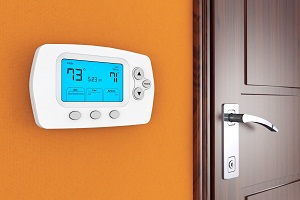
The evolution of digital thermostats and wirelessly connected devices are taking home temperature regulation to a whole new level. Manual thermostats are being replaced with digital models with increasing frequency. Homeowners are choosing digital thermostats for a number of compelling reasons.
Programmability
No one likes the idea of wasting money, but that’s exactly what you’re doing when your house is vacant and the thermostat is still telling the heat or air-conditioning systems to regulate the temperature.
Imagine programming the device to make the house comfortable during the early morning hours before you leave and just before you return from work. In the intermittent hours your digital thermostat automatically adjusts the air temperature, reducing your fuel and electricity bill. You can even program your digital device to maintain a specific temperature when you go away on vacation, having it reset to your base settings just before you return.
Efficiency
Digital thermostat systems work in tandem with energy-efficient furnaces and air-conditioners. After installation and programming, the three devices work as one system, continually communicating with each other based on the settings you chose. Your furnace and air-conditioner are always at the ready, waiting for the signal from the thermostat to do their job.
The Process
Unlike a wired model, digital thermostats communicate with your air-conditioner without employing any moving parts. Instead, they use thermistors and semiconductors to measure air temperature. Digital devices are fitted with screens that always display the current room temperature, which mode is engaged (heat or cool), the day of the week, and in some models, a humidity read-out.
Based on the data the thermostat automatically triggers a virtual “switch” via a triad. The triad receives the signal, switching the current, and creates a change in air quality.
Savings

Newer digital thermostats are able to signal the homeowner when something isn’t quite right with their system. These tend to be quick service calls with immediate resolutions. Gone undetected, small issues can become massive malfunctions over time, costing far more than a service call fee (which may be covered under your warranty) and a few small replacement parts.
Accessibility
The smartphone in your back pocket gives you immediate access to nearly everything you need to run your daily life. And now, by installing a quick app, it can give you control of your digital thermostat too. Imagine leaving for a week-long business trip and not being sure you reset the system for your extended vacancy. Simply pull out your phone, open the app and made the necessary adjustments.




Leave a Reply